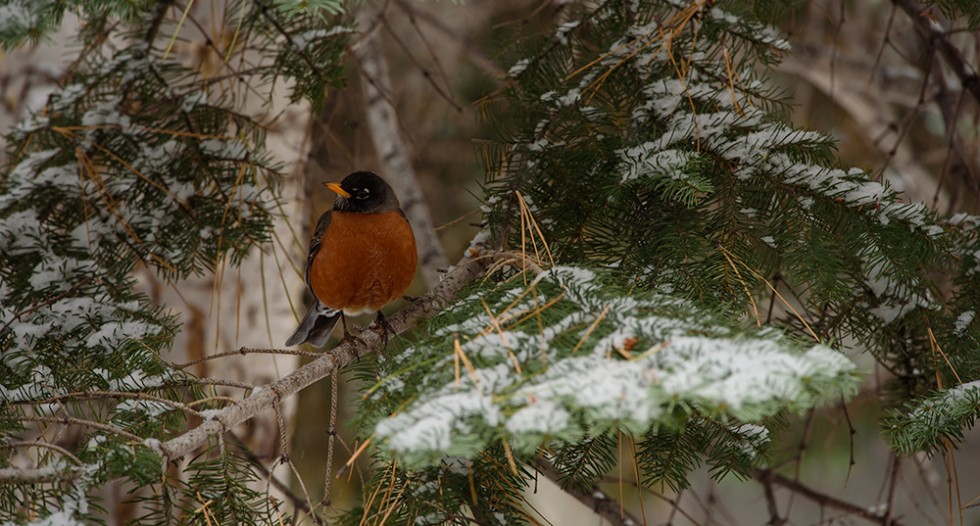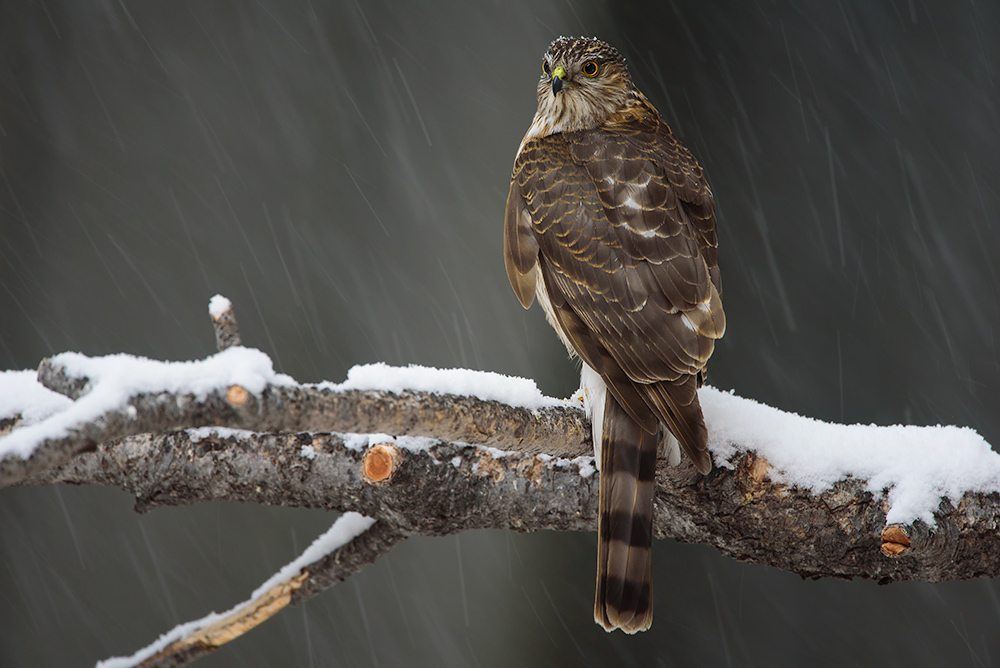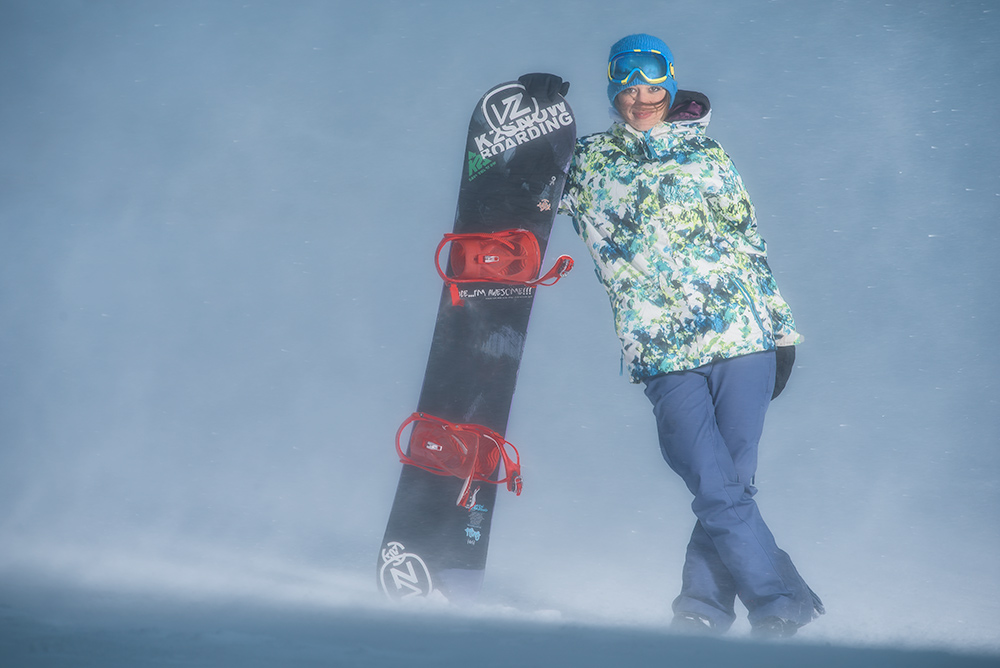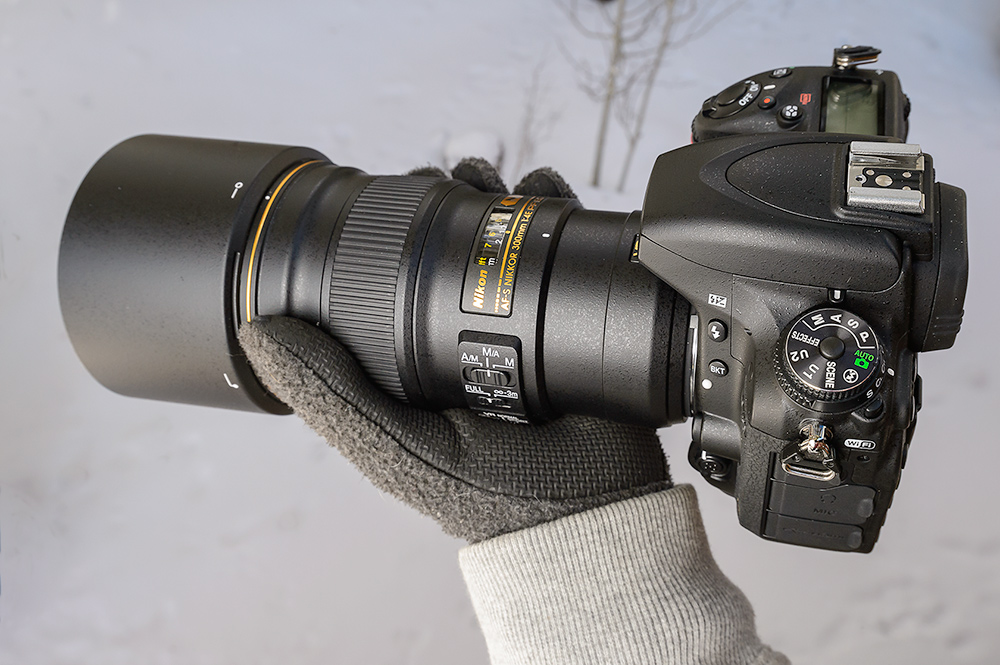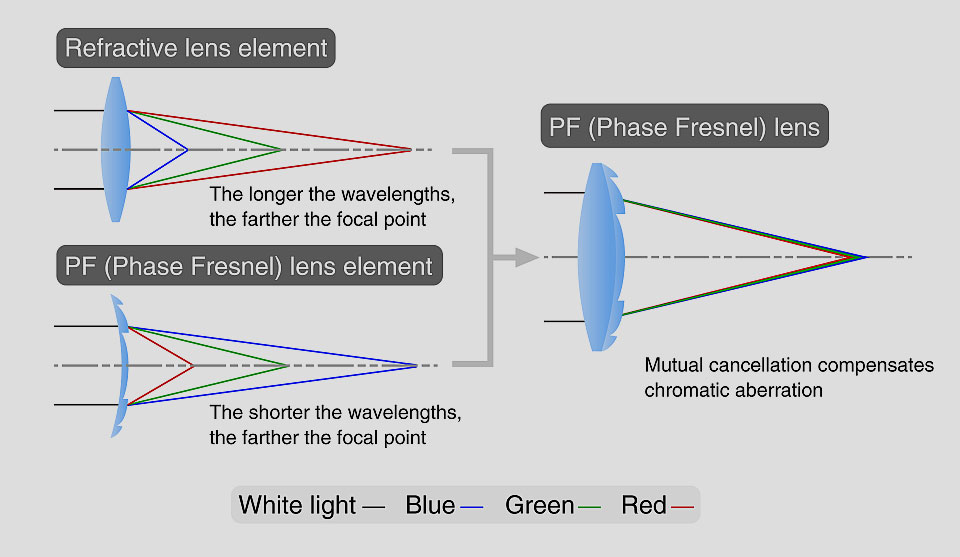Phase Fresnel: From Wildlife Photography to Portraiture
The AF-S NIKKOR 300mm f/4E PF ED VR is a fixed lens with a focal length of 300mm and maximum aperture f/4, this is the first NIKKOR interchangeable lens to feature the proprietary Phase Fresnel technology. Aside from improved image sharpness due to less chromatic aberration, the Phase Fresnel lens boasts a significantly lighter and smaller profile which makes it more portable and easier to use.
To test the new Nikon 300mm Phase Fresnel lens we enlisted the support of nature and wildlife photographer Moose Peterson. Among his many accomplishments, Moose is a Nikon Ambassador, recipient of the John Muir Conservation Award and a research associate with the Endangered Species Recovery Program. He is also a frequent lecturer and published author.
In His Own Words: A Closer Look at the Phase Fresnel Lens
I think the evolution of long glass just took another leap forward. In the realms of outdoor and wildlife photography, plus portraiture, you’ll find the AF-S NIKKOR 300mm f/4E PF ED VR to be a great addition to your gear bag. The technology delivers a difference—an optical design that makes the lens unit light, balanced and able to render super sharp images. This lighter camera weight keeps our arms from getting tired as we pan with birds in flight all morning long. This cutting edge technology in a new package provides us with a great tool for photography.
To test things out I attached the AF-S NIKKOR 300mm f/4E PF ED VR lens to the Nikon D750 full frame camera. This combination offered a great balance for hitting the outdoors to photograph critters. With my bag packed and camera ready, I then headed to a favorite location for photographing wildlife—my backyard.
Sharp-shinned Hawk, captured with Nikon D750 & NIKKOR 300mm PF lens.
Using the NIKKOR 300mm f/4E PF ED VR for Wildlife Photography
When capturing wildlife I like to get close to a subject but have the background at a decent distance behind. Working with the 300mm PF, and a combination of close subject with distant background, my subject matter visibly stands-out within the frame. You can see that separation in my photos of the Sharp-shinned Hawk above. Note the gorgeous out-of-focus region behind—soft yet with information.
Alternatively, I sometimes like to shoot by having the background physically close and then setting the camera aperture to f/4. This method still makes the subject visually pop in the photograph. The robin peaking out of the pines (at top) is sharp, but the world around is slightly out of focus so the eye goes to the subject first. For an image like this, the key of course is where you place the subject in the frame while using the lens’ narrow angle of view while you select the background you want. You do this by physically moving left or right, up or down. When working with a small and well-balanced lens like the 300mm PF, this fine tuning of your image can be a real pleasure.
Another great asset of the 300mm PF is its Minimum Focusing Distance (MFD) of only 1.4 meters/4.60 feet from the focal plane. Along with its f/4 maximum f/stop, plus the combination of MFD and narrow depth of field (8°10′ with Nikon FX format and 5°20′ with Nikon DX format), the 300mm PF is a stand-out wildlife lens. The background can be controlled so the viewer sees what we want to share with them. We need to surprise the viewer visually with our subject, and the technical attributes of the 300mm PF make this easy to accomplish.
Getting Even Closer with the 300mm PF
What if you want to get even closer? Nikon has you covered—if you’re shooting with an FX (full frame) camera like the Nikon D750 you can switch to the DX crop mode. The switch effectively crops the 300mm lens, changing the equivalent angle of view to that of a 450mm f/4 lens due to the 1.5X cropping multiplier.
If you are shooting with certain DX cameras, such as the Nikon D7100 or D7200, the 300mm PF already delivers the equivalent of a 450mm—but you can multiply it even further by using the 1.3X crop mode. In the 1.3X crop mode, the equivalent ends up being 2X the original 300mm. In other words, you get a 600mm equivalent end result. Not bad for a small and portable system.
And one more bonus for times when you are shooting in either setting—add the new Nikon AF-S Teleconverter TC-14E III. Optimized for sports, action, wildlife and press photography, this teleconverter achieves superb 1.4X enlargement with only a 1-stop loss of light. It works beautifully with the 300mm PF and gives a 420mm distance and an effective f/stop of f/5.6 on an FX camera. What’s really sweet about this combo is that the balance of the lens is retained, and it only grows in length by barely more than an inch.
Some times it is easy to forget that a lens like the NIKKOR 300mm PF lens can be used for subjects other than wildlife or sports. Due to its small size, you may find yourself reaching for the NIKKOR 300mm PF lens for location portraits where background compression is desirable.
The 300mm Phase Fresnel for Portraiture
Now let’s apply the 300mm PF to another genre: portraiture. A 300mm lens is a classic focal length for fashion work for a really good reason—the same reason why it’s great for wildlife. To really put the 300mm PF to the test I went to the ski slopes during a driving snowstorm. The small profile and new Sport VR mode delivered amazingly sharp images while being buffeted by the wind.
I also like the lens’ narrow angle of view, which was a real plus for me when creating this portrait (there was a truck on one side and trees on the other side that were cut out of the frame). This narrow field of view also permitted us to place a single flash unit really close to our snowboarder (yet remain out of the frame). When fired, the light unit produced that nice wrap-around illumination. With this lens we could also easily move laterally in order to best work the foreground and background, and have our snowboarder visually pop.
The AF-S NIKKOR 300mm f/4E PF ED VR is designed to be small and lightweight for handheld shooting. On a camera like the D750, the NIKKOR 300mm PF lens is perfectly balanced for comfortable shooting.
A Lighter Lens to Ease Your Photography
When working with the Phase Fresnel lens there are two things you will notice instantly: how lightweight it is and that there is no tripod collar ring. The lightness is predominantly attributed to the PF element used in the design of the lens. In simplest terms, the Phase Fresnel element reduces the size of the construction of the lens assembly—delivering full frame coverage at 300mm without the need for larger elements and in a much smaller footprint. Add to that a barrel composition made from the same polycarbonate material as the AF-S NIKKOR 18-35mm f/3.5-4.5G ED and you have a lens that you’ll find yourself using over and over again.
A second, more minor reason, for lessened weight is the lack of a collar ring. Do you need one? Not for stability when shooting with the 300mm PF if the camera is on a tripod. Being a tad smaller and lighter than the AF-S NIKKOR 24-70mm f/2.8 G ED there is not a need for that collar ring.
If you’re like me though and like to shoot vertical images as much as horizontal images, you might want to purchase the RT-1 Tripod Collar Ring. Attach the 300mm PF to the tripod via this collar mount. When you need to orient the camera in a vertical manner, you easily rotate the entire camera with lens in the collar ring without modifying your tripod set-up.
Shining a Light on the Phase Fresnel Lens
So what is a Phase Fresnel lens element? It’s actually based on the common Fresnel lens you see at the top of a lighthouse. Each lens has very exactingly cut ridges that bend light rays in a very specific manner. In the case of the 300mm PF, the ridges on the backside of the PF element are cut in very fine concentric circles. These cuts, along with the NIKKOR ED (Extra-low Dispersion) glass plus other proprietary elements, bend light such that the faster and slower spectrums of white light all come to focus at the same point on the focal plane.
Moving quickly and with ease is essential when photographing wildlife, and that’s what the AF-S NIKKOR 300mm f/4E PF ED VR makes possible. Light and fast—just like the old Western quick draw where you need to pull it out, aim and click fast!

